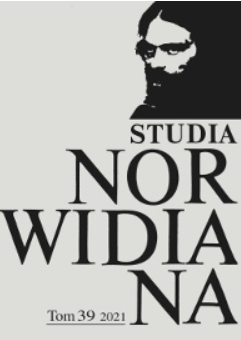Vade-mecum drogami cnoty. O poetyckiej aretologii Cypriana Norwida
Paths of virtue in Vade-mecum. Cyprian Norwid’s poetic aretology
Author(s): Agnieszka ZiołowiczContributor(s): Grzegorz Czemiel (Translator)
Subject(s): Poetry, Polish Literature, Theory of Literature
Published by: Towarzystwo Naukowe KUL & Katolicki Uniwersytet Lubelski Jana Pawła II
Keywords: Cyprian Norwid; virtue; aretology; valour; moderation; justice; kalokagathia;
Summary/Abstract: This article discusses the concept and imagery of virtue in Norwid’s cycle of poems Vademecum, focusing on lyrical pieces that refer directly to this subject (“Larwa” [The Larva], “Fatum” [Fate], “Ironia” [Irony] ,“Zawody” [Disappointments], “Centaury” [Centaurs], “Królestwo” [Kingdom], “Cnót-oblicze” [Face-of-Virtues], “Bohater” [Hero], “Ideał i reformy” [Ideal and Reforms],“Fortepian Szopena” [Chopin’s Piano]). They are nevertheless considered in the light of his entire body of work and on the backdrop of ancient – Greek and Roman – as well as Christian aretology. Norwid’s poetic study of virtue remains closely connected with these traditions, but is also inspired by literature (especially Homer, Prudentius and Dante) and art (the iconography of virtue). As analyses demonstrate, an aretology that involves reflection on virtues such as valour, moderation, justice and kalokagathia constitutes an important factor that binds together Vade-mecum at the levels of the development of the lyrical subject, the epic dimension of the cycle, as well as the anthropological and ethical issues it raises. These questions facilitate better understanding of Norwid’s concept of a poet-moralist and his diagnosis regarding the crisis of humanity in the nineteenth century.
Journal: Studia Norwidiana
- Issue Year: 2021
- Issue No: 39
- Page Range: 5-30
- Page Count: 26
- Language: Polish

